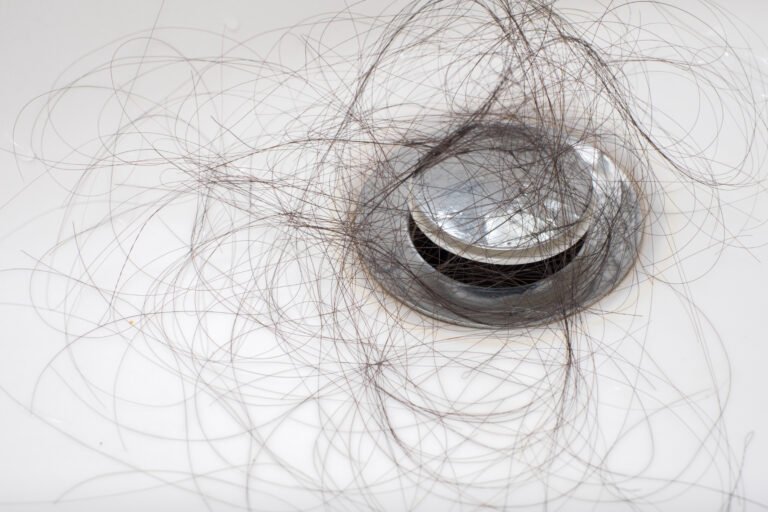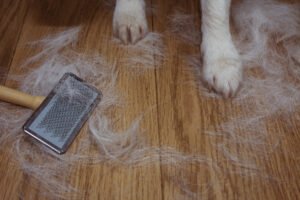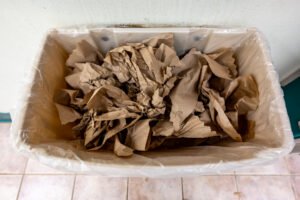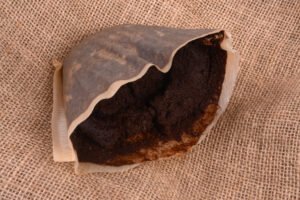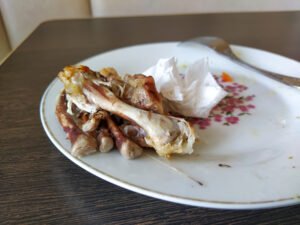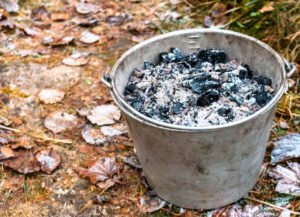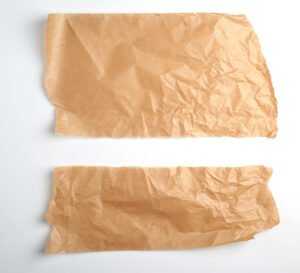Hair is the fastest-growing tissue in the body but all the hair that shreds are dead. So, what do you do with these dead strands? You might know it is popularly used to make wigs and hair extensions, but can you use it for your garden? Can you compost hair?
Key takeaways
- Hair is compostable as it’s the best source of Nitrogen and protein, has excellent water holding capacity, and helps deter pests from the compost.
- You can compost all kinds of natural hair through Hot Composting, Vermicomposting, and Cold Composting; the methods are explained below.
- It’s important to chop hair, mix them with other green materials and turn the pile frequently to keep hair from clumping inside.
- You can even use dog hair to make compost. But hair serves many other uses and benefits for a garden which you explore in this article.
So, gather all the fallen hair strands and continue reading to learn how to compost them!
How to Compost Hair?
Hair is among the most underutilized waste that is highly nutritious for plants. It falls in the greens and can be composted via regular cold composting, hot composting, and vermicomposting.
Any composting method requires a balance between brown and green materials along with oxygen and water to decompose efficiently.
Green materials are tender organic materials rich in Nitrogen and contain water. These include hair and fur, nail clippings, fresh yard trimmings, kitchen scraps like eggshells, coffee filters, fruit, vegetable scraps, etc.
The brown materials are mature, dry, and carbon-rich materials like dry yard waste, wood shavings, dry leaves, pine needles, sawdust, newspaper, and nutshell.
So, now that you know hair is a green material, you can replenish your soil quality by composting hair through worm farms or using a compost bin.
However, before composting them, you need to follow these two critical steps:
- Collect Chemical-Free Hair: Collect the hair from your hairbrushes or salons that are free from chemicals like dyes or hair spray.
- Shred the Hair: Cut the hair into small pieces if possible. This will prevent the hair from forming clumps in the compost pile and will break down quickly.
Composting Hair Using Compost Bin/ Pile
As the name implies, the hot composting method requires a high temperature to break down the materials.
If you consider using your pre-existing backyard composting setup, you just need to sprinkle the hair evenly over the other composting materials and give it a quick mix.

But if you want to start composting from scratch, get a compost bin or allocate a place in your backyard to pile up the materials and follow this guide to compost hair.
Step 1. Mix the Hair with Other Greens
Before composting, chop the food waste into small pieces and mix the hair clippings with it to ensure there are abundant green materials in the compost. This will make your composting process quick and easy.
Step 2. Make the Compost Bed Using Brown Materials
Spread a thick layer of all the dry and brown materials evenly at the bottom of the bin and dampen it with water.
Step 3. Add Greens Containing the Hair
Now add a layer of green materials along with the hair.
When spreading the hair in the compost bin, make sure there are no lumps.
Step 4. Alternate Between Green and Brown Materials
Continue layering the green and brown material alternatively and seal the compost heap with a firm layer of soil and manure on the top once done.
Ensure not to dump green materials exorbitantly into the bin as the hair contains high nitrogen levels. To achieve the best composting rate, You need to maintain a C: N ratio of 30:1.
Step 5. Turn the Compost Timely
Turn your compost with a pitchfork 3-4 times in the first week of adding the hair. This prevents lumps from forming and obstructing airflow in the compost. Later, turn the pile 2-3 times a week to aerate the compost.
If the steps outlined above are followed correctly, your finished compost should be ready to incorporate into the soil within 1-2 months.
Composting Hair via. Vermicomposting
Worms love hair because it is soft and elastic and provides them with proteins. When used in moderation, hair aids worms in acting on waste and releasing worm castings.

If you already have a wormery, just add the shredded hair to your worm bin. But if you are a beginner, get ready with a bin and shredded hair and follow the below-mentioned steps.
Step 1. Prepare the Bedding
Shred paper and spread it evenly in the bottom of the bin to make bedding for the worms. Then dampen the bedding and spread some soil over it.
Step 2. Add Food Scraps
Add green materials along with hair and cover the bin. Leave the materials to decompose for about two weeks.
Step 3. Add the Worms
Now, add a handful of red wigglers to the worm bin and cover them with damp gunny bags. These worms will move towards the green material and eat the bacteria feeding on it.
Step 4. Maintain the Worm Bin
Keep a check on the composting stock in the worm bin and add food scraps and water as needed. Turn the stock occasionally to aerate the wormery and speed up the decomposition.
Vermicompost will be ready to feed your garden soil within two months. You can collect the worm castings and start a new batch once you harvest the finished compost.
Avoid adding long hair to your worm bin. Your worms may get tangled in them.
Can You Compost Dog Hair?
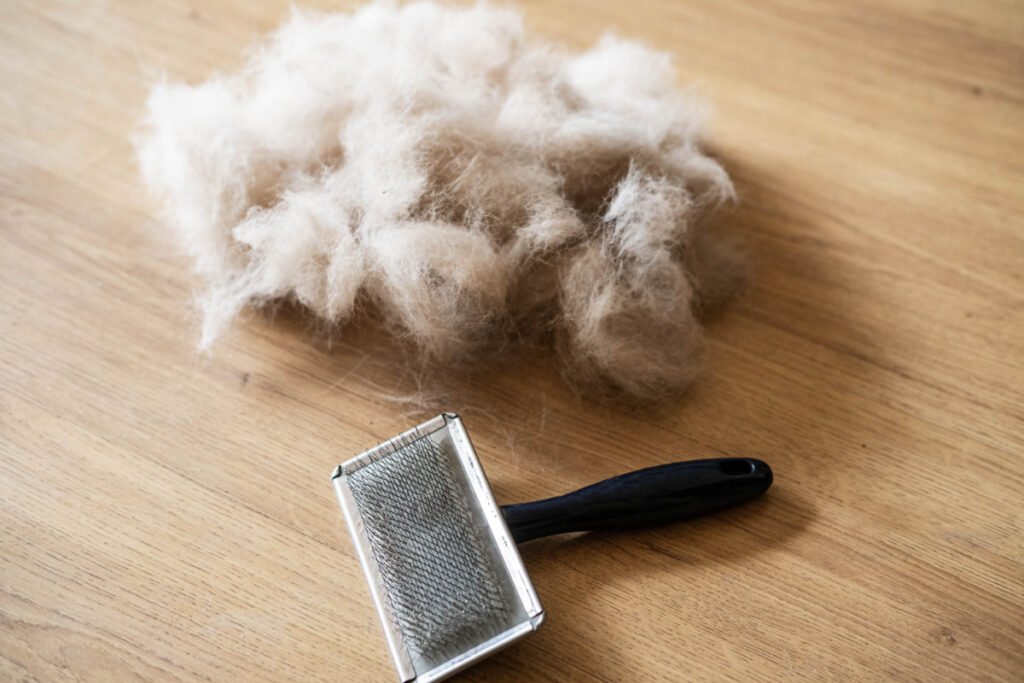
Composting dog hair is a great way to recycle and reuse your pet hair. Dog hair is an organic material, just like human hair, and is loved by plants.
It is packed with Nitrogen and protein and breaks down within 1-2 months in ideal conditions. Besides, dog hair does not have any downsides and does not attract any harmful pathogens or produce a foul odor.
To compost dog hair or any pet hair, sprinkle the fur in thin layers over other green materials and cover it with browns. Also, mix the compost well to avoid forming clumps and aid the process.
However, you must take the following measures:
- Do not add dog fur to compost if your dog is treated against topical parasites like fleas and ticks.
- Keep chemically treated dog hair away from the compost bin or worm bin.
- Avoid adding dog hair if vacuumed from synthetic carpets, as it might also have microplastics that wouldn’t break down in the compost pile.
Benefits of Composting Hair
According to the Journal of Waste Management, human hair is one of the highest Nitrogen containing (~ 16%) organic materials in nature as it is made of protein (it is considered that cattle dung contains only 0.2-0.3% of Nitrogen).
So, human hair is an excellent soil conditioner and is a great source of organic matter for the soil. Here are a few benefits you should know about composting hair.
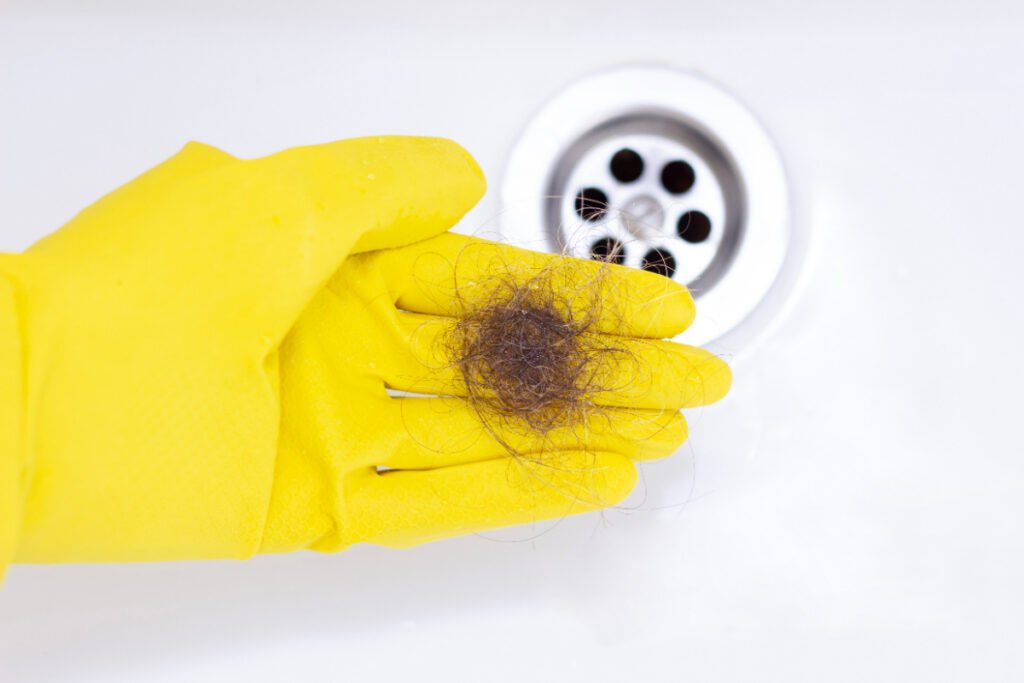
- Besides Nitrogen, hair contains some essential macronutrients like Hydrogen, Oxygen, Carbon, and Sulphur and helps plant growth.
- Hair retains water better than the soil (four times more than the soil) and helps bacteria in the compost to work efficiently.
- Composting hair keeps bugs and small critters away from the compost.
- Hair also improves the microbial action in the soil, thereby increasing soil aeration.
- Composting hair minimizes waste going to landfills and reduces carbon footprint.
- Composting hair will prevent the problem of blocking the drains in your bathrooms.
- Composting hair is easy and reduces the use of chemical fertilizers.
Additional Tips for Composting Hair
Composting is an easy and sustainable way to improve soil quality and structure. Composting hair has no downsides, except that it takes time to decompose.
However, you need to be cautious while composting them. So, follow the given tips to compost hair effectively:
- Do not leave the hair in lumps. This will cause compaction and reduce the airflow in the compost pile.
- Add hair in moderation and mix it with other green materials to maintain a good balance.
- Wetting the hair before adding it to the compost pile can help accelerate the decomposition process.
- Do not use chemically treated or dyed hair for composting.
- Avoid using hair from wigs as they are made of synthetic materials and glue.
Other Uses of Hair in Garden
Being an organic material, hair decomposes while releasing nutrients and is good for the environment. Apart from composting, it also benefits gardeners in other ways.
Here are a few important uses for hair that you must know if you’ve been throwing it away all this time.
- Use As a Mulch: Hair mats can be used as mulch to inhibit weed growth and retain moisture in the soil. It also helps to regulate plant temperature.
- Protect Your Garden: The smell of hair repels most animals, like snails, rabbits, rodents, deer, and wild boars. So, you can hang a stocking filled with hair near the border of your garden or spread them around!
Remember to change the hair stocking in your garden periodically to keep the pungent smell last.
- Fertilize The Soil: Apart from composting, you can use hair directly as a fertilizer for the soil. It releases nitrogen into the soil and keeps your plants healthy. Hair also contains Hydrogen, Oxygen, Carbon, and Sulphur, and their composition is similar to bone meal.
- Loosen Up The Soil: When fresh hair is buried in the soil, it provides structural support to the roots and helps to break up thick clay soils.
How long does hair take to decompose?
Hair decomposes slowly and takes up to two years to break down completely in the soil. However, if composted using ideal conditions, it takes about 1-2 months for the hair to break down enough to go into the garden soil.
Is human hair good for the soil?
Yes, human hair breaks down in the soil and releases nutrients. It contains 15% Nitrogen and trace amounts of sodium, oxygen, carbon, and hydrogen and keeps your plants healthy. It also helps to retain moisture in the soil and control weeds.
Does putting hair in plants help?
Hair is an excellent fertilizer and enhances the quality of the soil. It’s rich in nitrogen and can replace chemical fertilizers. So, if you do not have compost set up at home, you can bury hair in your soil. You can also use hair as an animal repellent and mulching material.
Is fallen hair good for plants?
Fallen hair acts as a soil supplement, provides structural support to roots, and helps loosen the clay soil by breaking it. You can add human or pet hair to the soil for the best results.
Can you compost pet hair?
Yes. You can compost pet hair. The hair or fur of a dog, cat, or horse is nutritious and supplements your compost with nutrients.
Can you compost dyed hair?
Dyed hair contains synthetic chemicals that might harm your plants. So it is recommended not to use dyed hair for composting. However, these days you are getting natural dyes, and hair treated with such dyes is entirely safe to compost.
Can you put hair in potted plants?
Yes, you can use hair as a fertilizer in potted plants, but remember, it releases nutrients slowly into the soil. So you must supplement your plants with other fertilizers like compost or manure.
Is hair considered green or brown material in compost?
As the hair is low in Carbon and has about 16% nitrogen, it is considered green composting material.
Can Hair Be Recycled?
Yes, hair is recyclable. It can be used in the art and textile industries. You can find hair being recycled for making jewelry and sculptures. Hair also is used to make wigs and hair extensions popularly.
Dryer lint is another underestimated regular domestic waste. And if you collect dryer lint from your washing machines, you must learn about composting dryer lint and its other uses.
